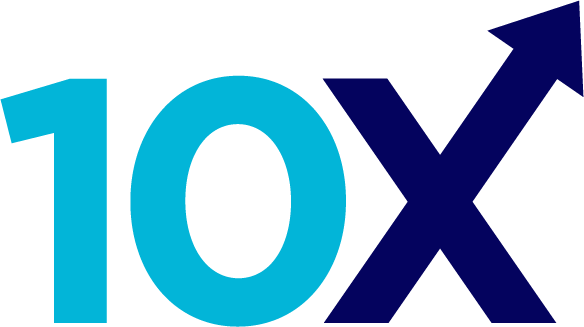The Surprising Power of Timing: Why I Send These Emails When I Do
Have you ever wondered why you tend to receive these Fundraising Tips at the time you do? It turns out, there’s a method behind it—and it’s a bit of an unexpected story. For many years, I used to send these emails on Thursdays. However, one week, due to technical issues, the email didn’t go out until Saturday. I was frustrated, assuming it would be less effective since weekends are typically considered “downtime” for work-related content. But to my surprise, the open rates were 20% higher than usual. Why? Honestly, I’m not entirely sure. Maybe it’s because there’s less competition for your attention on weekends, or maybe it’s just your preference. The point is, timing matters in ways we don’t always anticipate. This discovery highlights a key lesson for all of us working to improve lives through fundraising: it’s essential to be open to learning from unexpected results. Whether through testing or simply paying attention to what works, we can continuously refine our strategies to better serve our causes. Lifelong Learning and Continuous Improvement You and I both know that effective fundraising requires constant growth. The more we learn, the more we can achieve. Sir Isaac Newton once said, “If I have seen further, it is by standing on the shoulders of giants.” This wisdom applies to us as well, as we build on the knowledge and expertise of others. That’s why I focus these weekly tips on sharing practical lessons and insights from some of the most successful fundraisers and marketers. Whether it’s applying principles like Mises’ Model of Human Action or learning from legendary figures like Claude Hopkins, Robert Cialdini, or Jerry Panas, there is always something new to take in and apply. What Can We Learn? From Past Innovators: Marketers like Claude Hopkins and David Ogilvy revolutionized advertising with their focus on understanding the customer. Their lessons are still relevant today in the world of nonprofit fundraising. From Donor Behavior: By understanding what drives donor decisions—such as the importance of building trust and offering clear, actionable plans—we can secure larger, long-term commitments. From Current Practitioners: Today’s fundraising experts are constantly innovating. Learning from those on the cutting edge helps us stay ahead and maximize the effectiveness of our strategies. The Takeaway: Keep Learning, Keep Improving The unexpected boost in engagement from a simple shift in timing taught me that there’s always room to improve. By embracing new ideas and continuously learning from the experiences of others, we can strengthen our efforts, engage more effectively with donors, and ultimately make a bigger impact. After all, fundraising is not just about securing donations. It’s about building partnerships, solving real problems, and empowering donors to make a difference.
The Simplicity of Fundraising… or Is It?

Fundraising can often feel overwhelming with the many options available. Board members, CEOs, colleagues, and even friends offer well-meaning suggestions, leaving you wondering where to start and what to prioritize. If you’re looking for a practical approach to fundraising, Jerry Linzy’s advice might simplify things: “Identify the probable donor, cultivate the relationship, research capacity, build trust, and ask.” While it sounds simple, fundraising involves mastering various elements like donor acquisition, retention, and building strong, lasting relationships. To get started, consider: Acquisition strategies: Whether through direct mail, telemarketing, or digital channels, these help bring in new donors. Donor Lifetime Value (LTV): Understand the long-term value of your donors to justify your investment in acquisition. Brand awareness: It’s crucial for helping your organization stand out in a competitive fundraising environment. And remember, thoughtful donor recognition can build stronger relationships, encouraging future contributions.
Are You Ready to Go Big?

What if you could double your organization’s revenue and transform its impact? It’s possible when you embrace the power of thinking big. By casting a vision, defining clear objectives, and aligning them with a special initiative, you can tap into new opportunities. Whether it’s leveraging direct response or co-creating mega-gift partnerships, there’s a roadmap to scaling your organization’s fundraising efforts. Here’s how to get started: Cast your Vision: Articulate where you want to go and what you want to achieve. Identify the Problem you’re working to solve and how your organization can address it. Set clear Objectives for success: What will that look like for your organization? Launch a Special Initiative: A focused campaign or project with bold goals that will inspire support. With a robust plan and the right fundraising strategies—like direct mail, personal solicitations, and multi-channel media—you can create a lasting impact. Remember, the key to success is thinking big and positioning yourself to seize those opportunities.
How Important is it to Think Big?
That’s the question I posed to Jerry Linzy, the longtime business partner of the great Jerry Panas, who helped raise billions for nonprofits worldwide. Jerry’s response was simple but powerful: “It’s critically important. Major donors give to bold, heroic, and audacious programs rather than needy institutions.” If you’re not thinking big, you risk staying in the same fundraising cycle. Instead of asking your supporters to keep renewing their annual gifts, think about what bold initiative you could launch that inspires them to give more. How do you start? Begin with a vision. Cast a clear, bold vision for where your organization can go, and then develop a case for support around that vision. When your supporters see a bold opportunity, they’re more likely to take action. Remember, thinking big doesn’t just elevate your fundraising—it transforms how your donors engage with your mission.
It’s One of Your Biggest Gaps

And you’re leaving money on the table as a result. What am I talking about? I’m referring to the failure to highlight a special project or initiative to your prospective donors. It’s one of the most common mistakes nonprofits make, and it’s holding you back from Going Big. People are naturally attracted to specificity. Donors don’t just want to hear about the problems you’re addressing—they want to understand your plan to solve them. They want to know if your plan makes sense, if it’s realistic, and if their contribution will make a real difference. Your solution should be the centerpiece of your project. Each of us is passionate about our cause, but we sometimes get so caught up in our mission that we forget to explain the specifics. Donors are sorting through countless requests. They need clarity about your project to feel confident in giving. Do you incorporate special projects into your funding requests? If not, you’re missing a huge opportunity.
People Don’t Want to Give Money Away
They want to invest in bold, exciting, and inspiring ventures. How do you react to this bit of sage fundraising wisdom? It’s a valuable insight from Jerry Panas, one of the greatest fundraisers of all time. His statement reminds us that donors are not simply looking to part with their money. They’re seeking opportunities to invest in something that excites them—something that stirs their passion and gives them a sense of being part of a meaningful endeavor. Too often, we fall into the trap of saying, “Support our cause, it’s a good one.” But this rarely captivates potential donors. Instead, we need to focus on specific, compelling projects that offer a clear vision, timeline, and measurable impact. When donors know exactly what their contributions will do and how it fits into the larger vision, they feel engaged and inspired. Many successful fundraising campaigns focus on specific initiatives with clear, defined goals. Whether it’s restoring a historic building, providing essential equipment, or transforming an educational landscape, special projects can draw in donors who want to make a big difference. What’s Your Big Vision? Take time to think about what bold, exciting, and specific projects your organization could offer to your donors. What will make them want to be part of something extraordinary? Your dream may be the spark that stirs their passion and gets them to invest in a transformative effort.
Do You Recognize the Reference?
It’s quite the story—how Mahalia Jackson helped change the course of history. On August 28, 1963, the Reverend Martin Luther King Jr. was delivering closing remarks at the March on Washington. The crowd of over 250,000 people had gathered at the steps of the Lincoln Memorial, ready to hear King’s message. A few minutes into his prepared speech, Mahalia Jackson, a well-known gospel singer, called out from the crowd, “Tell ‘em about the dream, Martin, tell ‘em about the dream!” That was the prompt King needed. He set aside his prepared notes and began to speak from the heart. His improvised words became the legendary “I Have a Dream” speech, one of the most consequential orations in American history. Why does this story matter? Because it captures the essence of what it means to inspire—whether in a moment of social change or in the world of fundraising. As Jerry Panas said, “People don’t want to give money away. They want to invest in bold, exciting, and inspiring ventures.” It’s not just about asking for support; it’s about presenting a dream, a vision that stirs the soul. Applying Bold Vision to Fundraising When crafting a fundraising campaign, it’s essential to give donors a dream to believe in. It’s not enough to ask them to support a “good cause.” Instead, offer them an opportunity to be part of something bigger, something transformative. By presenting bold, audacious goals—much like Martin Luther King Jr.’s vision for equality—you capture not just attention, but hearts. When donors feel they are contributing to something extraordinary, their commitment deepens. A well-crafted vision and dream can be the foundation of a successful campaign, inspiring donors to give beyond what they initially imagined. What dreams are you inviting your donors to invest in?
A Fun Story for You…
Earlier this year something special happened. United Airlines recognized me for flying 2,000,000 lifetime miles since 1986. Yes, that’s a lot of donor visits over the years. However, the bigger story is how United Airlines chose to handle the recognition. On a short hop from Chicago to Grand Rapids, Michigan, the pilot came over to my seat to mark the occasion by presenting me with his flight plan, signed by the entire flight crew. Pretty cool, right? A flight attendant, not as prepared for the moment, offered me a bottle of water and a Ghirardelli chocolate wrapped in tissue—likely from her personal stash. It was a sweet (pun intended) gesture. Later, on a flight from Grand Rapids to Denver, the crew acknowledged my milestone again. This time, two flight attendants presented me with a bottle of sparkling wine pinned together with the plastic “wings” usually reserved for kids. But it didn’t end there. On my next flight from Denver to Palm Springs, the head of flight operations boarded the flight, came to my seat in economy, and asked me to follow him to the front. As I walked up the aisle, he joked, “Don’t get the wrong idea—you’re not getting an upgrade.” Once at the front, he made an announcement on the loudspeaker about my achievement, and the pilot invited me to sit in the cockpit. Now, granted, some of this was a bit cheesy. Each crew seemed to think they were the first to mark the milestone, and I played along each time. But it didn’t matter—it was the thought that counts. United Airlines’ authentic and sincere efforts at recognition left an impression on me. And I bet that’s why I’m sharing it with you now. Donor Recognition and Its Importance Why share this story? It’s a perfect segue into thinking about donor recognition. Just like United Airlines made me feel appreciated, thoughtful recognition can create lasting impressions with your donors. I recently caught up with Stephen Clouse to dig deeper into how donor recognition plays a role in strategic fundraising planning. Here’s a summary of what he shared: Stephen’s Insights on Donor Recognition When to Think About Recognition: Stephen explained that donor recognition isn’t the first step but certainly a top consideration. Donors need to feel a connection to your mission before recognition becomes meaningful. Recognition should be a byproduct of the donor’s contribution to something significant. How to Present Recognition: He emphasized that offering meaningful recognition upfront helps donors rationalize bigger gifts. For example, offering naming opportunities or commemorations gives the donor a tangible way to leave their mark on the project. Memorable Examples: Stephen shared examples like the Reagan Ranch, where $1,000+ donors had their names inscribed on the “Freedom Wall.” For those committing to estate plans of $1 million or more, a ceremonial tree planting was held in their honor. At Mount Vernon, $25,000 donors had their names engraved on the Wall of Honor, visible to over one million visitors annually. What Makes Recognition Successful: Recognition must be both memorable and relevant. It’s not about generic tokens; it’s about showing donors that their contribution helped achieve something extraordinary. It should be highly personalized and visible—a permanent mark of their impact. Your Thoughts? What’s your take on donor recognition? Does it play a key role in your strategy? Feel free to share your experiences. If you’d like to dive deeper into this topic, stay tuned for more discussions on impactful donor recognition strategies.
Did You Watch the Super Bowl Last Sunday?
This year’s game was certainly exciting, but what about the ads? How many do you remember? More importantly, did any of them move you to take action? Super Bowl ads have become a cultural phenomenon, known for humor, special effects, and celebrity cameos. Their goal is to leave a lasting impression and drive the viewer toward a product or action. But did they break through for you? In 2023, a 30-second Super Bowl spot cost $7 million. Experts are already analyzing the effectiveness of these ads. Some will go viral and create buzz, but many will fail to make a lasting impact on sales. This raises an important lesson: in a world full of noise, marketing needs to focus on timeless principles like positioning, differentiation, benefit, and brand. These core ideas are the foundation for successful campaigns. The Importance of Bold Fundraising Principles These same marketing principles apply to your fundraising efforts. In our recent discussion with Stephen Clouse, we explored the “12 Principles of Capital Campaigns”—a set of guidelines that can make or break any strategic fundraising initiative. Here are the key takeaways: Involved Donors Are Committed Donors: Trust is the foundation of any strong relationship. Donors who trust you and believe in your cause will give generously. No Shortage of Money, Just Bold Ideas: Donors want to support big, audacious goals that tackle root causes. Think big, and they will respond. Compelling Vision = More Investment: Pair your bold vision with a clear, persuasive case for support, and you’ll see greater financial commitment. Influential Leadership Attracts Major Gifts: Trusted and respected leaders lend credibility to your campaign and differentiate it from others. Donor Research Is Key: Understand what the donor wants to achieve, then tailor your campaign to align with their goals. Clear Goals and Inspiring Themes: Simplify your message. Make your goals clear and give your campaign a memorable theme. Offer Scaled Giving Opportunities: Show donors that every contribution matters by offering a range of gift levels, from $50 to $1 million or more. Recognize Donors in Memorable Ways: Tailored recognition can go a long way in deepening relationships. Always Ask for Specific Amounts: Specific asks and matching gifts can significantly boost your fundraising efforts. Tell Stories, Not Just Numbers: Emotional stories inspire donors, while numbers provide logical support. Use both effectively. Provide Written Proposals: Written facts and clear proposals reinforce your campaign’s legitimacy. First Gifts Are Often the Smallest: Cultivate relationships with new donors, and they’ll likely give more in the future. Going Big with Fundraising Whether you’re applying these principles to a capital campaign or general fundraising, these guidelines can help you Go Big! and achieve ambitious goals. Would you like to explore any of these principles in more detail? Let me know, and we can dive deeper in the next Fundraising Tip.
Crazy Idea: Could TV Ads Work for Your Fundraising?

Is it possible that you could use television to supercharge your fundraising? Could TV help you Go Big!, allowing you to promote a special project or initiative to your generous supporters? It’s not as crazy as you might think. While we know in-person fundraising remains one of the most effective methods, the limitations of time and space mean there are only so many face-to-face solicitations we can make. That’s where leverage—like direct mail, Zoom, email, and now television—comes into play. The Potential of ConnectedTV Television may seem out of reach for many nonprofits, but according to Tim Kachuriak, Chief Innovation and Optimization Officer at NextAfter, the advent of ConnectedTV has made television advertising more accessible than ever for nonprofit organizations. Instead of targeting broad demographics, nonprofits can now target specific donors or lookalike donor prospects, making TV ads more precise and cost-effective. ConnectedTV allows fundraisers to deliver their message directly to those most likely to contribute, and with 90 million users in the United States alone, it’s an untapped opportunity to reach more supporters. The Power of Targeted Ads Tim shared two examples of TV ads NextAfter recently broadcast to a select audience. The results? Positive feedback and engagement, showing that this approach has real potential for nonprofits to connect with their donors in innovative ways. What makes this approach particularly exciting is the ability to leverage first-party data to deliver ads to specific donors or prospects based on their past engagement. Key Benefits of ConnectedTV for Fundraisers Cost-Effective Acquisition: With ConnectedTV, nonprofits can achieve a better cost-per-acquisition than traditional TV ads by targeting individuals instead of general demographics. Efficient Reach: ConnectedTV allows for frequency capping, which means nonprofits can control how many times a potential donor sees their ad, avoiding ad fatigue and stretching budgets further. Innovative Formats: Unlike traditional TV, ConnectedTV allows for flexibility in ad lengths, including longer, more engaging formats like mini-infomercials that can deepen connections with viewers. Next Steps: Exploring ConnectedTV for Your Cause Could ConnectedTV be the game-changer your fundraising strategy needs? With the ability to target specific donors, control costs, and experiment with creative formats, it opens up exciting new possibilities for nonprofits looking to expand their reach. If this piques your interest, consider reaching out to Tim Kachuriak at NextAfter for more insights on how to leverage this platform for your fundraising efforts.

